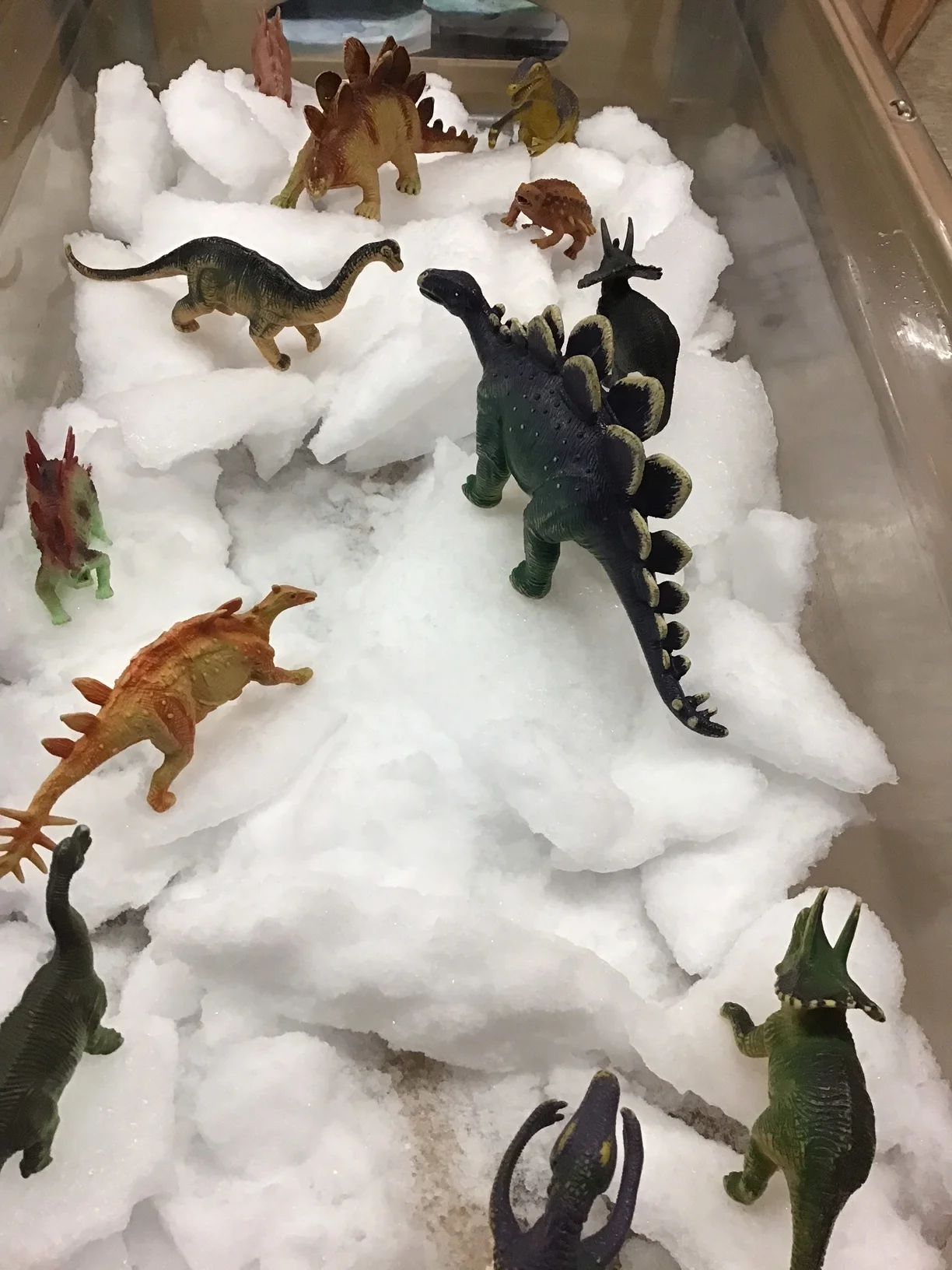Snow and Ice Belong In The Sensory Table
When it snows, children should still be allowed to go outside and enjoy the wonders of snow. That being said, snow and ice can also be brought into the classroom; the sensory table is the perfect spot to bring in snow and ice. First and foremost, this allows the children to feel the cold on their hands which is a sensory learning experience. But the learning does not stop there. Different types of snow feels different and have a myriad of properties . Some snow breaks up when you try to mold it while other types are as good as play dough or mud and is able to be shaped into whatever ones imagination can think of. Asking children to describe the differences in the kind of snow, learning terms for different kinds of snow in English and other languages can be great learning experiences. As the snow melts, children can learn concepts like melting, solid, liquid, volume and more. Toys like dinosaurs, other animals, and vehicles can be added to sensory table with the snow and ice to make a frozen dramatic play area. Adding water colors can turn it into an art activity. Best of all, snow is free and abundant in the New England winters so you don’t have to worry about new sensory area materials like moon sand driving up your classroom budget.









